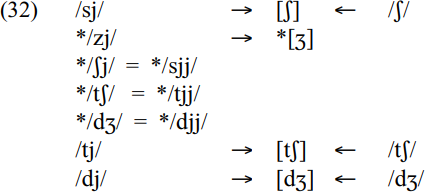

Grammar


Tenses


Present

Present Simple

Present Continuous

Present Perfect

Present Perfect Continuous


Past

Past Simple

Past Continuous

Past Perfect

Past Perfect Continuous


Future

Future Simple

Future Continuous

Future Perfect

Future Perfect Continuous


Parts Of Speech


Nouns

Countable and uncountable nouns

Verbal nouns

Singular and Plural nouns

Proper nouns

Nouns gender

Nouns definition

Concrete nouns

Abstract nouns

Common nouns

Collective nouns

Definition Of Nouns

Animate and Inanimate nouns

Nouns


Verbs

Stative and dynamic verbs

Finite and nonfinite verbs

To be verbs

Transitive and intransitive verbs

Auxiliary verbs

Modal verbs

Regular and irregular verbs

Action verbs

Verbs


Adverbs

Relative adverbs

Interrogative adverbs

Adverbs of time

Adverbs of place

Adverbs of reason

Adverbs of quantity

Adverbs of manner

Adverbs of frequency

Adverbs of affirmation

Adverbs


Adjectives

Quantitative adjective

Proper adjective

Possessive adjective

Numeral adjective

Interrogative adjective

Distributive adjective

Descriptive adjective

Demonstrative adjective


Pronouns

Subject pronoun

Relative pronoun

Reflexive pronoun

Reciprocal pronoun

Possessive pronoun

Personal pronoun

Interrogative pronoun

Indefinite pronoun

Emphatic pronoun

Distributive pronoun

Demonstrative pronoun

Pronouns


Pre Position


Preposition by function

Time preposition

Reason preposition

Possession preposition

Place preposition

Phrases preposition

Origin preposition

Measure preposition

Direction preposition

Contrast preposition

Agent preposition


Preposition by construction

Simple preposition

Phrase preposition

Double preposition

Compound preposition

prepositions


Conjunctions

Subordinating conjunction

Correlative conjunction

Coordinating conjunction

Conjunctive adverbs

conjunctions


Interjections

Express calling interjection

Phrases

Sentences


Grammar Rules

Passive and Active

Preference

Requests and offers

wishes

Be used to

Some and any

Could have done

Describing people

Giving advices

Possession

Comparative and superlative

Giving Reason

Making Suggestions

Apologizing

Forming questions

Since and for

Directions

Obligation

Adverbials

invitation

Articles

Imaginary condition

Zero conditional

First conditional

Second conditional

Third conditional

Reported speech

Demonstratives

Determiners


Linguistics

Phonetics

Phonology

Linguistics fields

Syntax

Morphology

Semantics

pragmatics

History

Writing

Grammar

Phonetics and Phonology

Semiotics


Reading Comprehension

Elementary

Intermediate

Advanced


Teaching Methods

Teaching Strategies

Assessment
Constraints on the onset: /j/ and /w/
المؤلف:
Hubert Devonish and Otelemate G. Harry
المصدر:
A Handbook Of Varieties Of English Phonology
الجزء والصفحة:
468-27
2024-04-06
1372
Constraints on the onset: /j/ and /w/
The composition of the onset may be constrained by the nature of the vowel(s) occupying the nucleus. We saw previously on JamC vowels that vocalic sequences /ui/ and /iu/ do not occur. Put another way, however, phonetic [iu] and [ui] sequences are only possible provided the initial vowel in the sequence occupies a C-slot, i.e. functions as the semi-vowels /w/ and /j/ respectively. These produce the phoneme sequences /wi/ and /ju/. This is demonstrated in the following examples.

There is an uneasy relationship between /j/ and /w/ on one hand and their vocalic equivalents, /i/ and /u/, on the other. The occurrence of semi-vowels in the onset is subject to a constraint which follows from their relationship with vocalic segments. Underlyingly, syllable onsets tend not to consist of a semi-vowel as the sole consonant, followed immediately by the vowel which is its vocalic equivalent. This blocks underlying sequences such as */ji/ and */wu/. Where [ji] and [wu] sequences do occur phonetically, it is in variation with a form without the initial semi-vowel, e.g. [unu] ~ [wunu] ‘you (plural)’, [jimba] ~ [imba] ‘a yam variety’ (Cassidy and Le Page 1980: 225, 457).
In JamC, the onset may have a maximum of two consonants. In such combinations, the first item is always an obstruent and the second an approximant. Combinations with /w/ as the second consonant are /pw, bw, tw, dw, kw, w, sw/. Those involving /j/ include /pj, bj, tj, dj, kj, j, fj, vj, sj, mj, nj/. Of these, /tj/, /dj/ and /sj/ do not have transparent realizations at the surface level. The matching phonetic forms, *[tj], *[dj] and *[sj] are blocked, in spite of a contrary suggestion by Wells (1973: 21). They may be blocked because the underlying phoneme sequences /tj/ /dj/ and /sj/ have their surface phonetic manifestations merged by speakers with those of the affricate and fricative consonant phonemes, /ʧ/ , /ʤ/ and /ʃ/ . Both sets of sequences become realized phonetically as [ʧ] , [ʤ] and [ʃ] respectively. The fact is, however, that the consonants /ʧ/ , /ʤ/ and /ʃ/ also occur in the coda, e.g. /matʃ/ ‘match’, /ʤoʤ/ ‘judge’, /jjaʃ/ ‘cash’. This establishes that [ʧ] , [ʤ] and [ʃ] can and do represent the consonant phonemes /ʧ/ , /ʤ/ and /ʃ/ rather than just underlying /tj/, /dj/ and /sj/. We suggest nevertheless that in the onset, speakers do treat [ʧ] , [ʤ] and [ʃ] as representing a merger at the phonetic level between [ʧ] , [ʤ] and [ʃ] , on one hand, and /tj/, /dj/ and /sj/ on the other.
The only consonants occurring in the JamC onset which are blocked from occurring before /j/ are /l/, /r/, /z/, /ʃ/ , /ʧ/ and /ʤ/. Given the position of /l/ and /r/ in the sonority hierarchy, we may regard them as sonorant consonants which, like /j/ and /w/, only occur in second position in the onset. An onset */zj/ cluster fails to occur because it cannot be phonetically reinterpreted. The expected form, * /Ʒ/, does not exist as a phoneme in JamC. The blocking of */ʃj/ , */tʃj/ * /ʤj/and are, we would suggest, the result of the unacceptability of the alternative /sjj/, /tjj/ and /djj/ underlying representation. These would require a */jj/ sequence. The analysis is presented below.

The apparent occurrence of /dj/ on the surface as in /djam/ ‘damn’ really involves a disyllabic sequence /dijam/, with prominence on the second syllable.
 الاكثر قراءة في Phonology
الاكثر قراءة في Phonology
 اخر الاخبار
اخر الاخبار
اخبار العتبة العباسية المقدسة

الآخبار الصحية















 قسم الشؤون الفكرية يصدر كتاباً يوثق تاريخ السدانة في العتبة العباسية المقدسة
قسم الشؤون الفكرية يصدر كتاباً يوثق تاريخ السدانة في العتبة العباسية المقدسة "المهمة".. إصدار قصصي يوثّق القصص الفائزة في مسابقة فتوى الدفاع المقدسة للقصة القصيرة
"المهمة".. إصدار قصصي يوثّق القصص الفائزة في مسابقة فتوى الدفاع المقدسة للقصة القصيرة (نوافذ).. إصدار أدبي يوثق القصص الفائزة في مسابقة الإمام العسكري (عليه السلام)
(نوافذ).. إصدار أدبي يوثق القصص الفائزة في مسابقة الإمام العسكري (عليه السلام)


















